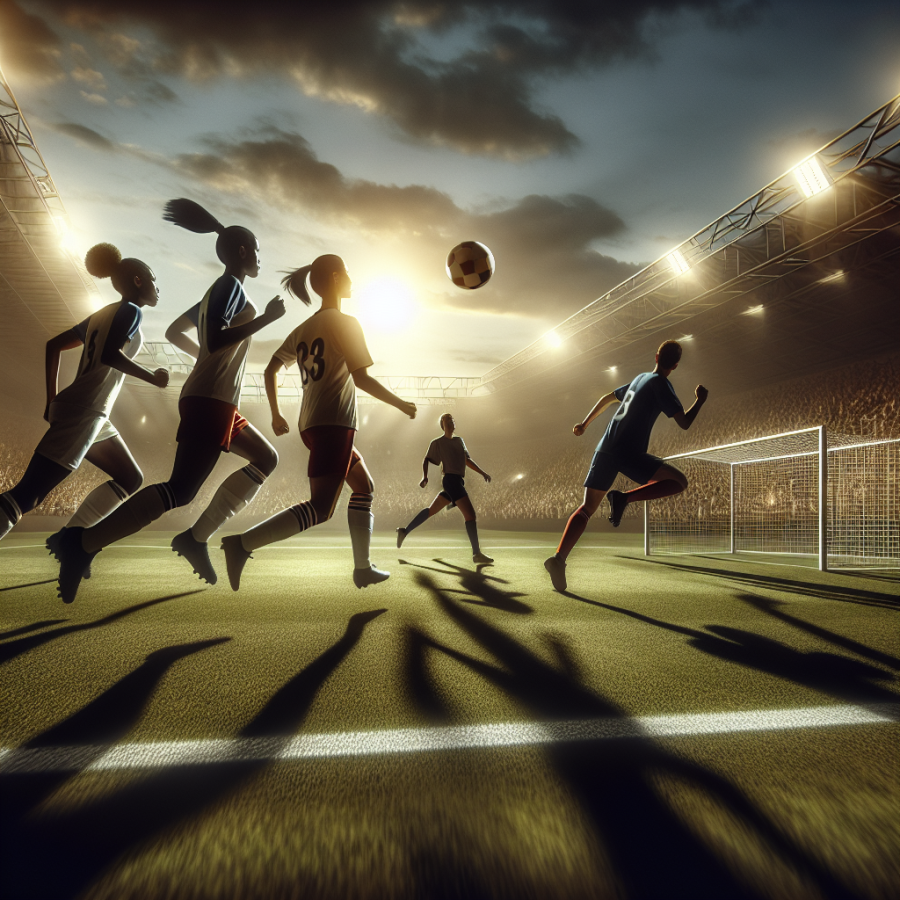Understanding the Pressures and Rewards in Competitive Sports
Competitive sports bring about a deep level of intensity, excitement and fascination to both athletes and spectators. The thrill of the game, the vigorous training, the sheer physicality, and the taste of victory - all are exhilarating characteristics of competitive sports. However, it's crucial to delve into the pressures and rewards at the heart of this platform, understanding both the highs and lows that mold an athlete's journey.
Competitive sports are a world of high pressure - a pressure applied by various external forces as well as within the individuals themselves. Athletes, irrespective of their level of competition, face extensive stress and anxiety, often stemming from the ambition to excel, the fear of failure and judgment, and the desire to satisfy their stakeholders' expectations, particularly in team sports.
Training and performance pressure that athletes undergo is physically demanding and requires extensive strength and endurance. They need to train incessantly, maintaining a high fitness level, and mitigating the risk of injury while pushing their bodies to the optimum level. Commitment to this constant cycle of strenuous physical activity causes immense physical but also mental tension.
Competitive sports are also a high-pressure world from an emotional standpoint. The tremendous pressure athletes face can lead to mental health issues such as depression and anxiety. Frequent disappointment from non-performance, dealing with harsh criticisms, and pushing through despite injuries require considerable mental resilience.
When it comes to competitive youth sports, the pressure can mount uncontrollably. The demand for performing well in school and sports, managing peer pressure, and living up to the expectations of parents and coaches can be overwhelming to navigate.
However, while the pressures are formidable, the rewards in competitive sports can be monumentally enriching – influencing growth and development in several aspects of life.
Competitive sports provide a platform for athletes to learn and exhibit discipline, which extends beyond the playing field. The rigorous training schedule, punctuality, focus, and faithfulness to the sport teach them how to manage time, set goals, and strive for them - qualities that are beneficial in personal and professional life.
Teamwork is crucial in sports and is also a key life lesson that athletes imbibe. Working together towards a common purpose, understanding each team member's role, and recognizing that collective success trumps personal glory are important for any collective endeavor.
Competitive sports also reward athletes with increased self-esteem and confidence. Their ability to handle pressure, make quick decisions, adapt, and handle failure or success can boost their resilience and self-assurance.
Read also:
Celebrating the Champion: Who Won the Canadian Open Golf Tournament?"
The Intense Journey: From Amateur to Professional Athlete in Competitive Sports
Every professional athlete has a beginning, a humbling genesis that evolves over time, culminating in roaring crowds, leagues, and tournaments. That journey, from amateur to professional level, is intense, demanding, and unforgiving. It shapes the individual, strengthens their mind, and tests their limits. This journey involves a unique mix of individual talent, training, opportunity, guidance, mental strength, and immense will power.
The initial phase is often about identifying potential. It is during these formative years that individuals gain their first exposure to a sport, usually through school or out-of-school clubs. The key, however, lies in discovering a passion for the sport. The initial love for the craft often starts with a raw talent that gets noticed early. This initial recognition is critical as it instils a sense of self-confidence and fosters an ambition to grow within the sport.
The next step involves nurturing this talent and turning potential into skill. This is where training becomes critical. Amateur athletes spend countless hours honing their skills, pushing their physical and mental limits, and indulging in continuous learning. Training routines are structured and centered around improving technique, physical strength, agility, and speed. This phase also involves facing competitors, learning about opponents, understanding strategies, and representing local clubs or schools in local tournaments. Participating in leagues and tournaments helps the players understand the elements of competition.
Turning professional involves a leap of faith. Amateur athletes must be ready to face stiff competition, as they are faced with the added pressure of consistent top-tier performances while managing an increased level of risk in terms of potential injuries. The professional level demands that athletes perform at elite standards consistently, making the daily grind of training even more intense.
The journey from amateur to professional also requires ample guidance and mental conditioning. Coaches and mentors play a pivotal role in guiding the athletes, helping them make critical professional decisions, and providing emotional support. They also work on strengthening the athlete's mental game because the pressures of professional sports are not only physical, but emotional and psychological. The circumstances call for athletes to deal with stress, face defeat, manage expectations, cope with injuries, and maintain motivation.
The transition stage can impose immense emotional strain on the athletes, who often deal with the potential fear of failure and the implications of their career decisions. Professional athletes tend to face performance-related anxieties, including the stress of performing consistently at a high level and the possibility of losing their positions.




